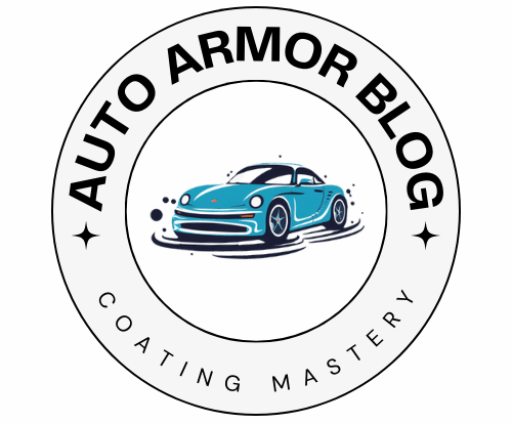Hey friend! Are you tired of looking at those dirty car seats every time you get in your car? Well, I’ve got something that might just help you out! In this DIY guide, we’re going to show you some simple and effective ways to clean your car seats and give them a fresh new look.
So, what can you expect from this article? Well, we’ll be covering everything from basic cleaning techniques to tackling stubborn stains and odors. Whether you have fabric or leather seats, we’ve got you covered. You’ll learn about the best cleaning products to use, as well as some handy tips and tricks that will make the job a breeze. So, grab your cleaning supplies and get ready to give your car seats the TLC they deserve! Stay tuned for some awesome DIY car seat cleaning tips coming your way.

DIY Car Seat Cleaning Guide
Car seats are an essential part of our vehicles and often attract a lot of dirt, spills, and stains over time. Regular cleaning not only helps maintain their appearance but also ensures a healthy and hygienic environment for both you and your passengers. While hiring professionals to clean your car seats is an option, it can be quite expensive. That’s why learning how to clean your car seats yourself is a great DIY project that can save you money. In this comprehensive DIY car seat cleaning guide, we will walk you through the process step-by-step, ensuring your car seats are spotless and fresh once again.
Why DIY Car Seat Cleaning is Important
Car seats, like any other surface, accumulate dirt, sweat, spills, and stains over time. Neglecting regular cleaning can lead to the proliferation of bacteria and allergens, causing health issues for you and your passengers. Additionally, stains and deep-seated dirt can be unsightly and diminish the overall appearance of your vehicle’s interior. By taking the initiative to clean your car seats yourself, you can ensure a clean and healthy environment for all while restoring the beauty of your car’s interior.
Tools and Materials Needed for DIY Car Seat Cleaning
Before diving into the cleaning process, it’s important to gather all the necessary tools and materials. Here are the items you’ll need:
- Vacuum cleaner with upholstery attachment
- Soft-bristled brush
- Microfiber cleaning cloths
- Mild upholstery cleaner (check for compatibility with your car seats)
- Leather cleaner (if you have leather seats)
- Stain remover (choose a suitable one for your car seat material)
- Vinyl or leather conditioner (for leather seats)
- Warm water
- Spray bottle
- Bucket
By having these tools and materials ready, you’ll be fully equipped to tackle any type of dirt or stain on your car seats.
Preparation Before Cleaning
Before you start cleaning your car seats, there are a few important steps to take in order to prepare the area properly. These steps will ensure that your cleaning efforts are effective and efficient:
- Clear your car of any loose items – Remove any loose items from your car, such as toys, trash, or personal belongings. This will make it easier to access and clean the seats without any obstructions.
- Vacuum the car seats – Using a vacuum cleaner with an upholstery attachment, thoroughly vacuum the seats to remove loose dirt, crumbs, and debris. Pay close attention to the crevices and hard-to-reach areas, as these tend to accumulate a significant amount of dirt.
- Check for stains or spills – Inspect your car seats for any visible stains or spills. Take note of their location and nature, as this will help determine the appropriate cleaning method or stain remover to use later.
With these preparations done, you’re now ready to start the actual cleaning process and make your car seats shine again.
Step-by-Step Instructions for Cleaning Car Seats
Now that the preparation is complete, let’s dive into the step-by-step instructions for cleaning your car seats effectively:
Step 1: Identify the type of car seat material – The cleaning method and products you use will vary depending on whether your car seats are cloth, leather, or vinyl. It is essential to identify the material of your car seats before proceeding further.
Step 2: Dust off the seats – Use a soft-bristled brush to gently dust off the seats and remove any loose dirt or debris that may have remained after vacuuming.
Step 3: Test the cleaner – Before applying any cleaner to the entire car seat, test it on a small inconspicuous area first. This will help ensure that the cleaner is compatible with the material and won’t cause any damage or discoloration.
Step 4: Cleaning cloth seats – If you have cloth seats, spray a mild upholstery cleaner onto a microfiber cloth and gently scrub the seats in circular motions. Focus on areas with visible stains or spills. Avoid saturating the seats with excessive moisture.
Cleaning Leather Seats
Cloth seats are not the only ones susceptible to dirt and stains; leather seats require their fair share of TLC as well. Cleaning and conditioning leather seats should be done with care to ensure they remain in good condition.
To clean leather seats:
- Start by vacuuming the seats to remove any loose dirt or debris.
- Next, spray a suitable leather cleaner onto a microfiber cloth and gently wipe the seats in a circular motion. Be sure to focus on areas that are particularly dirty or stained.
- For stubborn stains, use a soft-bristled brush to gently scrub the stained area.
- Once the seats are clean, dampen another microfiber cloth with warm water and wipe away any remaining residue.
- Finally, apply a high-quality leather conditioner to keep the seats soft, supple, and protected. Follow the manufacturer’s instructions for the specific conditioner you are using.
Removing Stains and Odors
No matter how careful you are, stains and odors can find their way onto your car seats. Thankfully, there are several methods to effectively remove common stains and odors:
- Removing food or beverage stains – For fresh stains, immediately blot the area with a clean cloth or paper towel to absorb as much liquid as possible. Then, using a mild upholstery cleaner and a soft-bristled brush, gently scrub the stained area in circular motions. Be cautious not to scrub too aggressively, as it may damage the fabric.
- Eliminating pet hair – If you have pet hair embedded in your car seats, use a slightly dampened microfiber cloth or rubber gloves to collect the hair. Simply rub the cloth or gloves over the surface, and the hair will cling to them.
- Dealing with ink stains – Ink stains can be particularly challenging to remove. Try applying rubbing alcohol onto a clean cloth and gently dabbing the stained area. Continue dabbing until the ink starts to lift, but be careful not to rub the stain, as it may spread further.
- Tackling strong odors – To eliminate unpleasant smells from your car seats, sprinkle baking soda liberally across the seats and let it sit for several hours or overnight. The baking soda will absorb the odors. Vacuum the seats thoroughly to remove the baking soda residue.
Drying and Conditioning Car Seats
After cleaning your car seats, it’s crucial to ensure they are properly dried. Moisture left behind can encourage the growth of bacteria or mold. Here are some tips to effectively dry your car seats:
- Open the car windows or doors to promote air circulation, helping the seats dry faster.
- If possible, park your car in a sunny area. Sunlight can aid in the evaporation of moisture.
- Use a dry microfiber cloth to absorb any excess moisture on the seats.
Maintaining the Cleanliness of Car Seats
Once your car seats are clean, it’s important to establish a regular maintenance routine to keep them looking their best. Here are some tips to help you maintain the cleanliness of your car seats:
- Vacuum your car seats regularly to remove loose dirt, crumbs, and other debris.
- Place seat covers or protectors on your car seats to prevent spills and stains from reaching the upholstery.
- Wipe up any spills or stains immediately to prevent them from setting in or causing permanent damage.
Conclusion
Cleaning your car seats yourself can be a rewarding and cost-effective endeavor. By following this comprehensive DIY car seat cleaning guide, you can ensure a hygienic and visually appealing car interior. Remember to gather all the necessary tools and materials, prepare the area properly, and follow the step-by-step instructions for each type of car seat material. With regular maintenance, your car seats will remain clean, comfortable, and inviting for all your journeys ahead.
For more information on maintaining your car’s appearance, check out our articles on the benefits of using ceramic coating, how ceramic coating works, and how to apply ceramic coating on wheels. If you’re interested in other types of coatings, we also have a step-by-step guide to applying a graphene coating on your car and an article on how to apply a ceramic coating.


